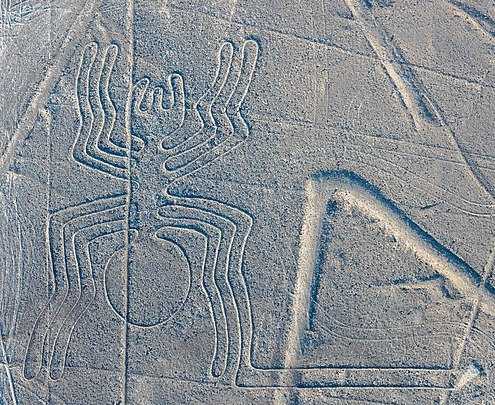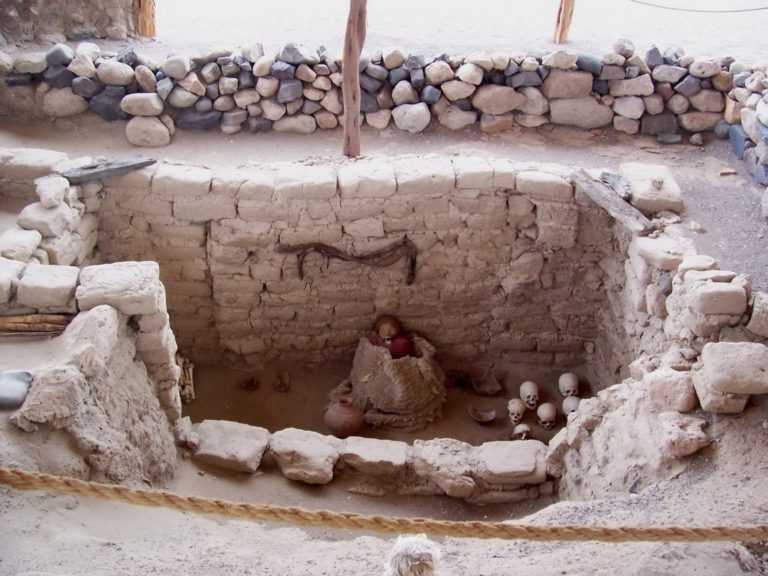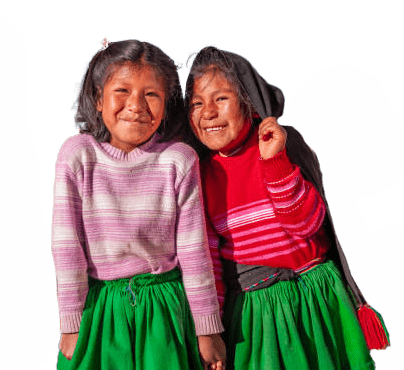Local Attractions in Ica
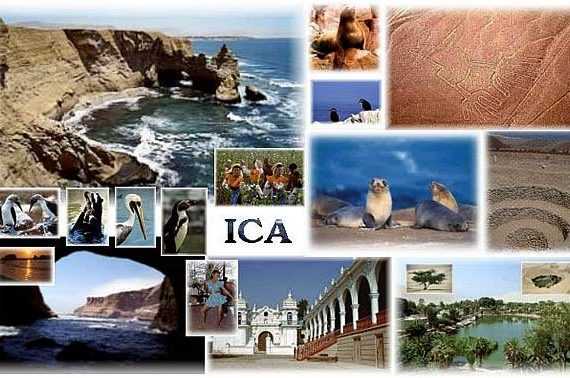
There is much to see in the Region of Ica. The city of Ica where we are quite close to (about 25 minutes away by shuttle), is only a small part of the Region. Please consider while you are here to take in Pisco, Paracas, Nazca, and much more. Since Ica is only a day trip from Lima, it is easily the 2nd most popular tourist location of all of Peru and definitely the more accessable and lower cost to visit. We look forward to your stay with us at la Misión, but also would encourage you to take in the sights when you can. This short webpage is by no means meant to be an exhaustive overview of what you can visit and see, but is meant only as a suggestion. Please google up any and all sites or locations that you have an interest in. There are tour operators in the center of Ica (Plaza de Armas) who will sell you packages to take in many of these sites.
OASIS DE HUACACHINA located in the Ica region, just 5 km from the city center, the “Oasis de America” becomes the perfect place for hiking and spending a pleasant afternoon with family, friends or parents.Huacachina in Quechua means “crying woman”. An ancient legend tells that the lagoon is born from the tears of a beautiful green-eyed woman who wept for the death of her beloved, a valiant general in Inca times. (Somehow there is a mermaid in this legend too, as a statue commemorates).
Its geography invites the traveler to practice adventure sports such as traveling in a Buggy, a large vehicle in the form of a car that will transport him through the impressive dunes at full speed, living a moment full of adrenaline. Sandboarding allows you to slide through the desert sand on a board (sandboard), using movements similar to surfing or skateboarding, it can be done standing, sitting or even lying face down for beginners, it all depends on the level of difficulty.
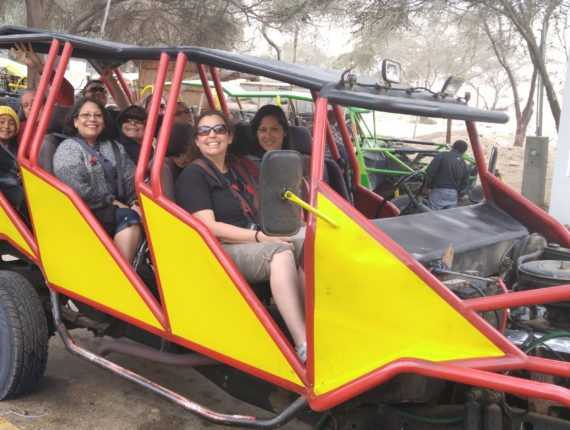
[2020 – If going direct to Huacachina (without a tour package) today’s pricing for a package of dune buggy riding and sand dune surfing (usually two hills in each tour, one short 700 meter and one long 1500 meter), will run you just under 40 soles per person. Tour operators might do better or equal to that but then often you might only get one dune ride and shorter buggy ride. Be sure to ask of the tour operator if that is of importance to you.]
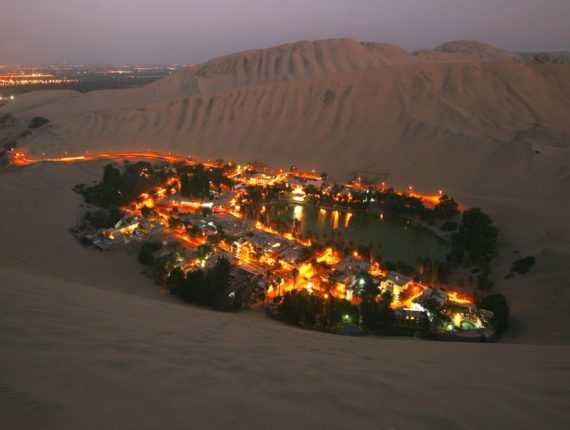
LAGUNA DE HUACACHINA Huacachina is a desert oasis among dunes, palm trees and huarangos where there is a peguena villa just west of the city of Ica just 5 km from the city center, in southwestern Peru.
In its center are the emerald green waters of the Huacachina lagoon, which is believed to have therapeutic properties and is surrounded by palms. The banks of the lagoon have bars and clubs and some good (not always cheap) restaurants to enjoy local Peruvian dishes while enjoying the view of the oasis. Paddle boats are available for your rental enjoyment.
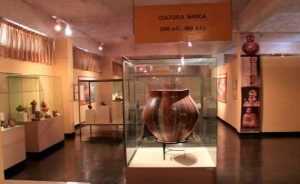 Regional Museum of Ica Adolfo Bermudez. This Museum was created on May 30, 1946. Nowadays it has a building with a valuable collection of archaeological pieces, a product of the findings achieved in sites that were inhabited by the Nasca, Paracas, Huari cultures, and even those populated by the Incas.
Regional Museum of Ica Adolfo Bermudez. This Museum was created on May 30, 1946. Nowadays it has a building with a valuable collection of archaeological pieces, a product of the findings achieved in sites that were inhabited by the Nasca, Paracas, Huari cultures, and even those populated by the Incas.
This Museum was created on May 30, 1946. Nowadays it has a building with a valuable collection of archaeological pieces, a product of the findings achieved in sites that were inhabited by the Nasca, Paracas, Huari cultures, and even those populated by the Incas.
They are divided into different rooms; One of the first ones that make up the museum circuit is that where skeletal remains that were found in different parts of the current Ica territory are exhibited. These remains allow the public to know the possibility of learning about the customs and medical technologies performed by groups such as the Paracas, who were practitioners of the famious cranial trepanations.
Likewise, this outstanding area of the museum includes in its collection a set of skulls that draw attention to certain anomalies.
In the Museum there is also a replica of the famous Nasca Lines, a group of geoglyphs, which are located in the Pampa de Nazca.
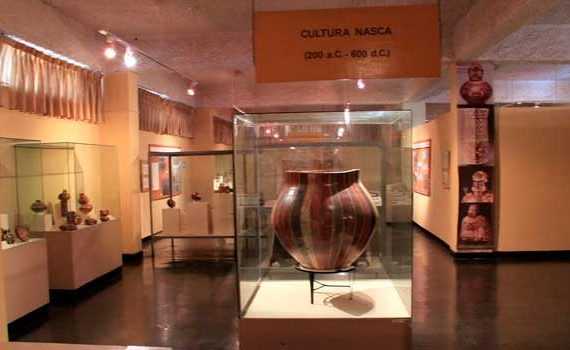
Ica is famous for it’s vineyards and wine making. There are many to choose from. El Catador Winery, Vista Alegre Winery are a few that tourists love.
The most popular is Tacama Vineyard, which is also the closest to the Mission, accessable just east of the village of San Juan Bautista itself.
At Tacama, you can get some great cuisine at their restaurant, enjoy some entertainment outside with regional costumes, dance, music and horse work.
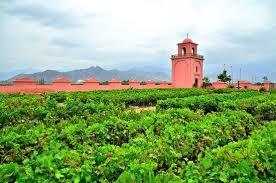
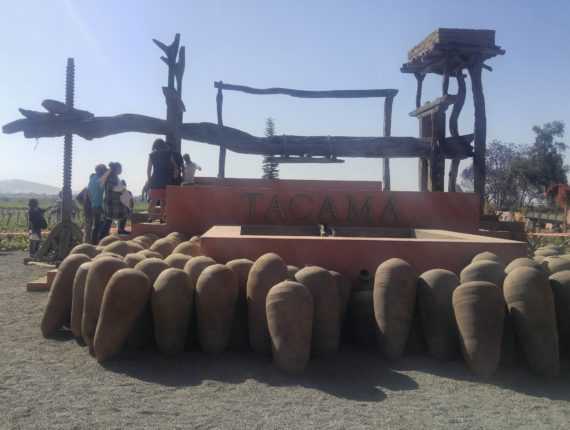
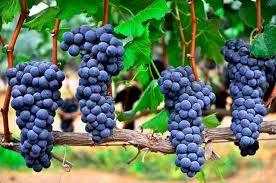
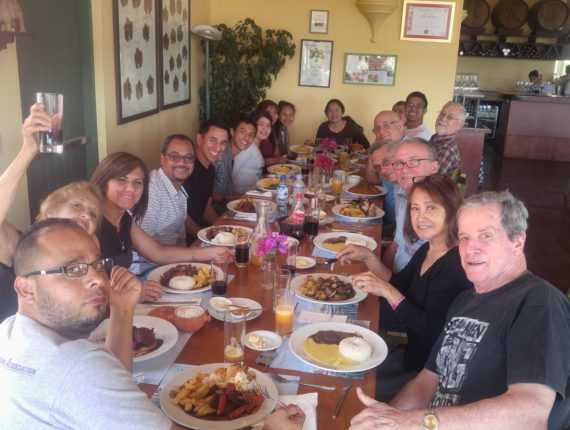
The Tacama hacienda and winery in the La Tinguiña district, Ica, is the district just across the river from San Juan Bautista district where la Misión is. Tacama is the oldest winery in Peru. the pioneer, the initiator, the Spanish who planted the first vines in the hot Ica Valley in 1540. And the vines brought from the Canary Islands adapted, caught on and took root. The centennial history of a vineyard and a tradition began what is today: Tacama.
This is the first wine tourism center in the country. Its opening is a response to the growing interest of travelers to discover the hacienda, which is near an inspiring desert, oasis and sea. Four options at Tacama for the tourist to choose from,
- the traditional one to know the production processes and taste the wines and piscos;
- that of the hacienda that takes you to discover the environments of the colonial house from 1815.
- Perhaps the Gran Tour Tacama, an unforgettable visit to the tasting room; or
- Don Manuel, an adventure in the underground cellar designed for the care and upbringing of high-end wines from the line.

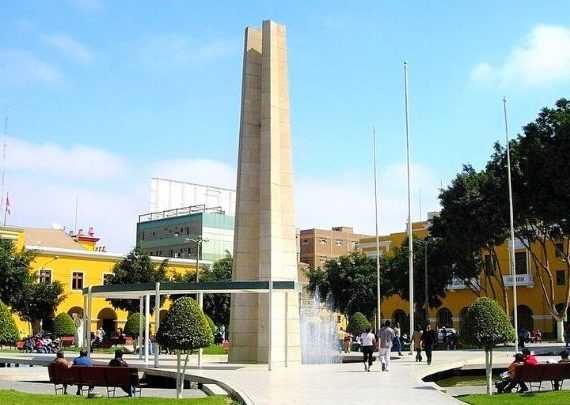
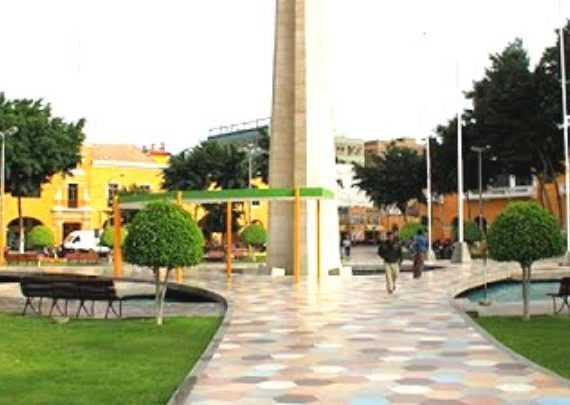
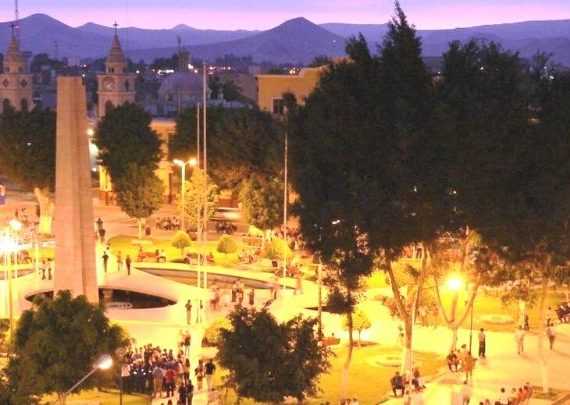
PLAZA de ARMAS de ICA Nicolas de Rivera, first mayor of Lima and one of the “famous 13” (spanish conquistadors who captured Peru for Spain) and a trusted man of Francisco Pizarro, was looking for a suitable place, in the Ica lands, for the capital city of the conquest. He chose the Pisco area, where he founded the town of Sangallán, Pizarro dismissed Rivera’s decision and preferred the Rimac valley.
On June 17, 1563, the Spanish captain Luis Jeronimo de Cabrera founded the town of Valverde de Ica. Then, due to several earthquakes and by order of the Viceroy Conde de Nieva, the city moved to the place it occupies today.
The Plaza de Amas de Ica is characterized by being surrounded by gigantic woody trees belonging to the “ficus” genus, which gives it an ancient appearance. During the arrival of the Spanish.
Obelisk with two needles, a gazebo with lines that evokes the small squares of yesteryear and lush ficus trees, give it an enviable architectural picture. In its perimeter is the Municipality of Ica with its magnificent portals and the Cathedral of Ica.
CANYON of the LOST – Adventure in the middle of the Ocucaje desert, 69 kilometers southeast of the city of Ica (2 hours & 45 minutes) start the journey to the canyon of the lost, a little explored geological formation that will impress you in a matter of seconds. Dare to walk through its depths.
This canyon (they say) is about 35 million years old and the fossil remains found around attest to this. The four levels of the Canyon of the Lost invite you to stay tuned throughout the visit.
A guide will not only show you the best places to take pictures of this wonder of Ica but will also detail everything about the fossil remains of whales, megalodon teeth and seashells found at this point. A lagoon is also part of the tour you can do in two hours. Information link link2 Video, whales with legs?
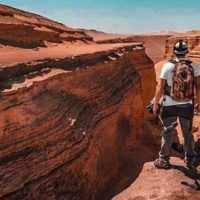
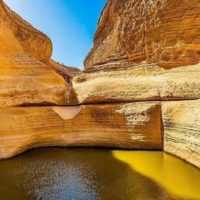

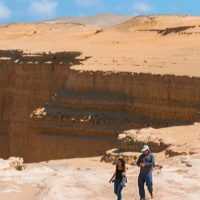
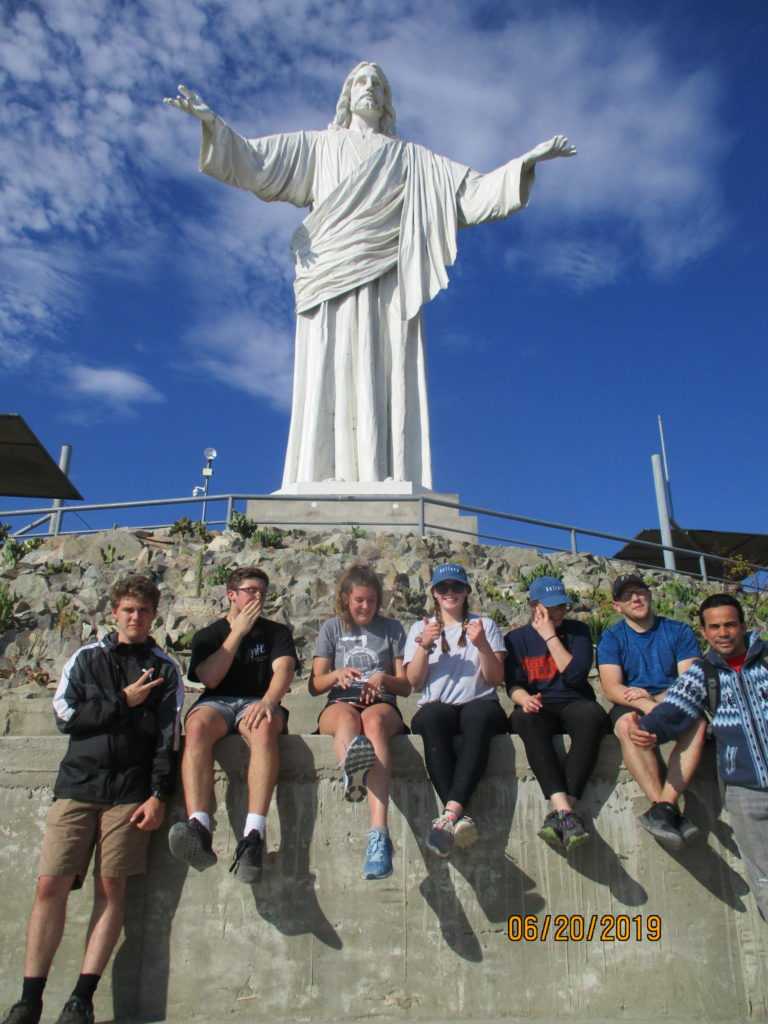
CRISTO BLANCO de Ica Near by, within walking distance to la Misión, is a landmark that we have named “Cristo Blanco”.
Oddly, it is in the middle of the desert looking out over reclaimed desert made into productive farmlands. One of the villages we service weekly is San Pedro, and that is half the distance to Cristo Blanco. It is about a mile in total distance from the mission. We don’t have all the facts on this landmark, but it looks like it is being created as a future tourist stop from the Pan American Highway to the west of us.
I don’t have the actual statistics on it yet, but it appears to be about 15 meters tall. We haven’t officially measured it or gotten that figure from anyone. Having visited the “Cristo Blanco” in Cusco, as it looks over the city of Cusco (which many tourist visit), know that it is just 8 meters tall and definitely a LOT smaller than this one. I know of one other “Cristo Blanco” high in the mountains of Huaraz in north of Peru. I have to imagine there are a few others. But thought I would include this here as a great hike while you are visiting.
Pisco, Perú
One hour north of us, up the Pan American Highway, is the beach city of Pisco. Pisco offers a lot of attractions for a day or two of touristing. Tour operators offer packages in Ica, or it is an easy drive from the Mission. If driving on your own, or taking a bus, Pisco itself is to the west of the Pan American Highway where the buses (S/. 5 from Ica) drop you off, requiring an inexpensive collectivo ride to the city center of Pisco (yes, another Plaza de Armas). There are some tour operators at the bus drop, most are in the city center, and of course many were in Ica as well before you left. All depends on if you are wanting to self tour or not. Know that when you get to the city center, the beach is a short walk, It would most likely need a taxi to go too far, and there are great seafood restaurants in the seaside area of San Andreas. To go to Paracus or the national reserve, definitely will need transportation. A short list of things to do there (not intended to be complete) would include:
1. Take in the Scenic Views of Paracas National Reserve – a large coastal land reserve is quite beautiful to see, and there are excellent museums in the middle of it (Museo de Sitio Julio C. Tello de Paracas; Museo Histórico De Paracas Juan Navarro Museum). This enormous natural reserve spans the entire Paracas Peninsula and serves as a sanctuary to countless exotic and endangered species of marine and coastal wildlife. In fact, many consider the reserve’s bird population to be the largest concentration of birds in the world. Even if bird-watching is not your thing, everyone can appreciate the otherworldly views at this unique juncture where the desert meets the sea. Highlights include the beaches of La Mina and Playa Roja, the latter being a stunning red sand beach overlooked by cliffs.There are many options to see the Paracas National Reserve, including guided tours by bus, quad-bike or private vehicle and solo adventures by bicycle (however, keep in mind that the reserve is massive and many of the best sights are quite spread out).
2. Marvel at the Wildlife on the Ballestas Islands – The Ballestas Islands are the main attraction for visitors to the region. Known as the “poor man’s Galápagos,” these rocky islands off the coast of Peru are famous for their plentiful wildlife and awe-inspiring natural beauty. The islands, which have been eroded by wind into a series of picturesque arches and other formations, provide shelter for dozens of bird species as well as dolphins, sea lions and other marine wildlife.
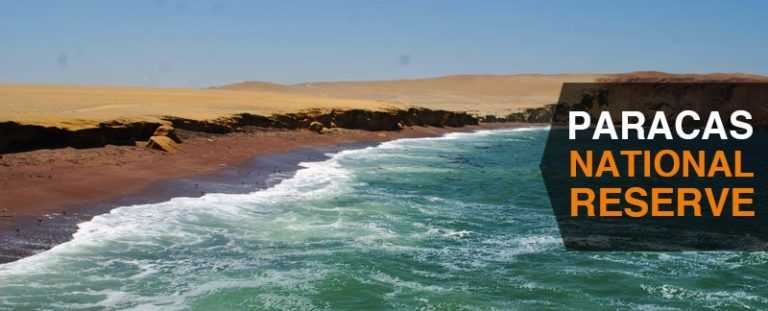
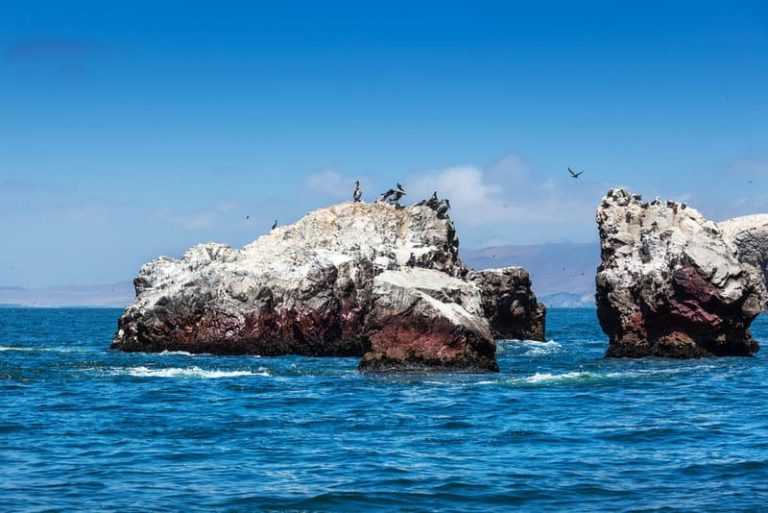
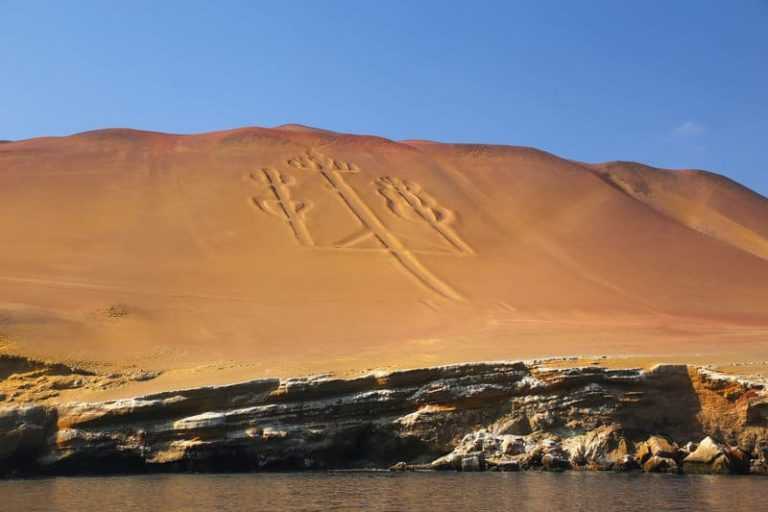
Tours leave on speedboats from the nearby town or Paracas and are very affordable, usually running around $15-20.
3. Ponder the Mystery of the Candelabra – This enormous pre-historic geoglyph welcomes boats to Pisco Bay from the northern face of the Paracas Peninsula.Though the design resembles the style and method of the Nazca culture, the “candelabro” is located many miles away from the famous Nazca lines and it’s unclear who is responsible for it. A variety of folk legends have arisen to explain its origin, attributing it to pirates, national hero Jose de San Martín, the Freemasons, and, of course, extraterrestrial aliens. Regardless of who created it, this fascinating and enigmatic sight makes for a great photo while you’re in the Pisco area. Most boats heading to the Ballestas Islands will pass by the Candelabra and stop for a picture, but make sure you confirm with your tour provider before you depart, just to be sure.
4. Pisco shopping, Ceveche & seafood in San Andres, Paracas beaches, and more – There is so much more to see, do, experience in the Pisco/Paracus area, we can not do it justice on this one page. Many well preserved ruins, fantastic seafood, beaches to surf, and more.
Nazca – Going south of Ica, about 2 hours by bus, is the very special area of Nazca. Very ancient large pre-Columbian geoglyphs etched into the desert sands. These are still very much not explained.
Covering an area of nearly 1,000 sq. kilometers, there are about 300 different figures, including animals and plants. Composed of over 10,000 lines, some of which measure 30 meters wide and stretch more than 9 kilometers, the figures are most visible from the air or nearby hilltops.
You can schedule an air tour from Pisco, Ica or Nazca. The closer you actually get to Nazca, the cheaper the air tour will be. Think $100/per person in Nazca, a bit more if you do it from Ica, and still more from Pisco. Obviously travel time and fuel play a role.
There are many things to see in Nazca on the ground as well. The city of Nazca is not huge but also has it’s own Plaza de Armas. 1500 year old wells, still functioning, for example are popular tourist sites. Also, there are many museums (just like Pisco/Paracus) to make you familiar with what findings are from the Nazca area. For example there is an outdoor museum that shows the mummified remains which were discovered. Nazca is a very unusual place on this planet and if you have the time while you are here, it is definitely a location that you should get familiar with.
